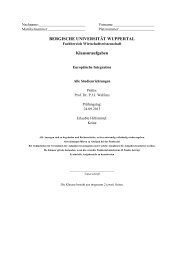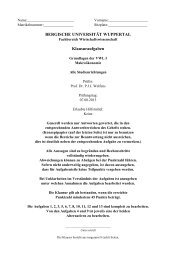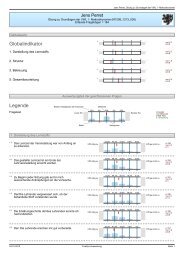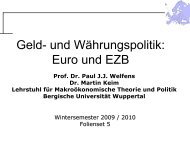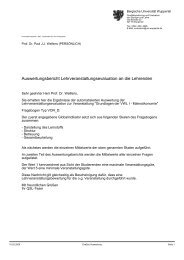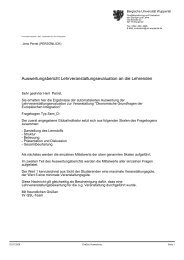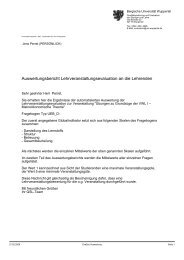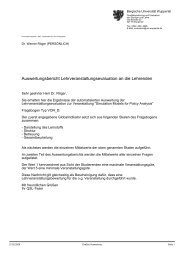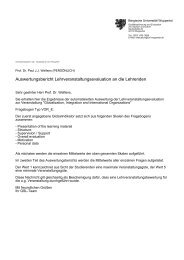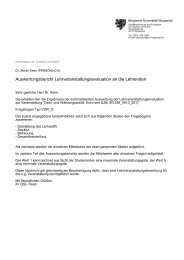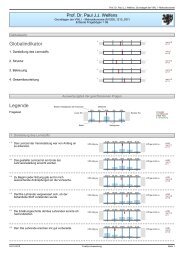UNIVERSITÄT POTSDAM - Prof. Dr. Paul JJ Welfens
UNIVERSITÄT POTSDAM - Prof. Dr. Paul JJ Welfens
UNIVERSITÄT POTSDAM - Prof. Dr. Paul JJ Welfens
You also want an ePaper? Increase the reach of your titles
YUMPU automatically turns print PDFs into web optimized ePapers that Google loves.
• A risk premium emerges as reflected in the interest rate; as of 2001 there was<br />
not yet a euro risk premium visible, but with a sustained devaluation of the euro<br />
such a premium might gradually emerge. A risk premium would raise the real<br />
interest rate and reduce the investment-GDP ratio.<br />
• The inflation pressure in Euroland is increasing since the import of more expensive<br />
imported intermediate products and final products will translate into a rise<br />
of tradables prices.<br />
The critical question indeed concerns the medium and long-term development<br />
of the euro. Based on transatlantic interest rate differentials and relative stock market<br />
prices WELFENS (2000) presented a robust out-of-sample forecast. In the following<br />
sections we want to shed further light on the devaluation issue.<br />
Taking a closer look at the transatlantic growth differential we find several remarkable<br />
points in the 1990s (RÖGER, 2001; WELFENS, 2001a):<br />
• The USA has grown continuously faster than Euroland in the 1990s.<br />
• The growth rate of labor productivity in high technology clearly outpaced that<br />
of the EU after 1993. Germany – representing one-third of Euroland’s GDP –<br />
faces not only a considerable gap vis-à-vis the US; worse yet is that the labor<br />
productivity in technology-intensive fields was lower than the average for the<br />
overall economy in the mid-1990s.<br />
• The US has exploited the economic potential of the internet revolution much<br />
faster than the EU; both the user density (demand side) and the host density<br />
(supply side) have increased much faster in the US than in France, Italy and<br />
Germany. The US has a firm lead in computer density, being one-fifth ahead of<br />
Germany and one-fourth ahead of France; Italy has just half the US computer<br />
density and was matched in 2000 by the Republic of Korea.<br />
• The fall in prices of ICT goods – relative to the GNP deflator – reached about<br />
8% in 1981-94, but after 1995 it increased to 15% p.a which has considerably<br />
stimulated innovations, both process innovations and product innovations, including<br />
novel digital services. Falling relative prices clearly stimulate diffusion.<br />
This should benefit the US even more as the world’s leading computer producers<br />
and software firms are located in the US. With the US facing tightening labor<br />
markets in the mid-1990s the incentives for firms to invest in labor-saving<br />
ICT increased – leading to a sustainable ICT investment growth in the late<br />
1990s.<br />
• A study by the OECD (2000) shows clearly that countries with a high R&D<br />
intensity in the ICT field also have a high R&D intensity for the overall economy.<br />
While Sweden, Finland, Korea, the US and Japan are leading economies<br />
from this perspective, Germany is only in a medium position. This OECD<br />
7



